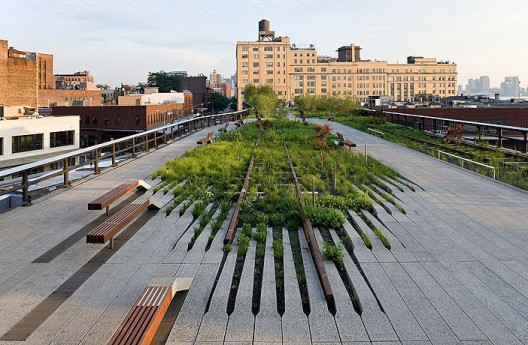Line in the landscape may be the sharp edge of paving, structure, or rock; the boundary between two different surface materials, as grass and ivy; the edge of a shadow; or the silhouette outline of any three-dimensional form, such as a rock, plant, or building. Whatever its source, a line in the landscape plays an important role in the way one sees, interprets, and relates to the scene. A line may lead the eye into the distance, around a corner and out of the scene, or around the scene and back again, holding the viewer within it. It is similar to the role of lines in a painting, holding the viewer within or leading him out of the composition.
LINE + EDGE





